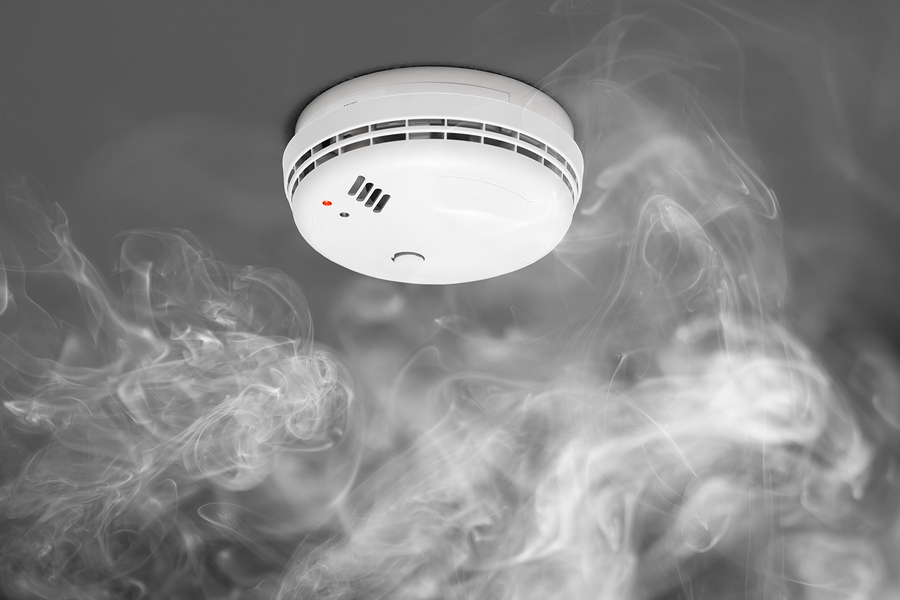The law requires employers, site owners, tenants of work buildings and landlords to regularly carry out fire assessments, but this Health & Safety legislation does not extend to the home.
This is despite the majority of fires and fire-related fatalities in the UK are domestic. In 2014/15, 80% of all fire-related fatalities occurred in the home, according to official figures.
To improve your domestic fire safety, try putting the following six guidelines in place.
1 Identify potential fire hazards
Take a look around your home and keep an eye out for anything that could possibly go up in flames or contribute to fire.
- Obvious materials include paper, gas and overloaded sockets.
- Less obvious materials are wooden furniture, curtains and plastics near sources of heat.
- Check ignition sources. Heaters, lights and anything that get hot are a risk.
- Ensure smoke detectors are in working order.
2 Identify people at potential risk
After compiling a comprehensive list of potential hazards, evaluate who is at risk in the event of a fire.
- Is there anybody in your home or likely to visit that will be at greater risk? Children, elderly and disabled people may have more difficulty evacuating a property.
- Is there alternative escape route? The answer may be no, but it is worth considering.
- Where are the people most at risk located? You don’t want them to be too far away from a fire escape if they have any mobility issues or struggle with breathing.
3 Assess your assessment
Once you’ve identified those people who are at risk and checked them against your fire hazard list, you can plan to minimise potential danger.
- Any removable hazards that you found earlier should be sorted immediately. It could be something as simple as moving a curtain away from a heat source to getting rid of a six plug adapter in the living room.
- Try and reduce any risks that you noted earlier. Are flammable items replaceable? Can you place fire extinguishers, blankets and other firefighting aids in suitable places in your home?
- Do you regularly check that smoke alarms work? Don’t forget that these could save your life and they can’t do this with no batteries.
4 Plan for the worst
Your assessment can be used to create or update a fire safety plan. You now have all the tools at hand to devise a safety method should any outbreak occur. Your plan should incorporate several key points.
- How will an alarm be raised and people informed? Hopefully the first stage of this will be a smoke detector but it’s useful to have secondary tactics.
- Where is your fire assembly post? This shouldn’t be too far away from the home but obviously not too close either.
- Who will be responsible for calling the fire brigade?
- Is there a plan for reassuring children or frail family members?
- Who would be tasked with using any fire extinguishers to tackle small blazes within reason? Does that person understand that when it is time to get out, it is time to get out?
- Is your evacuation plan mapped out and understood by everybody? This includes visitors.
5 Practice makes perfect
Be sure that everyone understands their roles in the event of fire. Your evacuation plan is hopefully never going to be used but that doesn’t mean it doesn’t need testing. After all, how will you know it actually works without trialling it?
A fire drill is not a legal requirement in the home but it is highly recommended that one is carried out every six months at a minimum. You are not obliged to record any results but knowing where you can improve and get out a little bit quicker can make the world of difference.
6 Carry out a regular review
What works now, won’t necessarily work in a couple of years. Fire hazards you removed or reduced may creep back in over time. A biannual fire safety assessment can help to ensure the long term safety of your home. This should involve more or less the same criteria as your initial review but you may want to add a few points that you know apply to your house.
- Is your previous assessment still being acknowledged?
- Has anything changed since your last assessment? Buildings work, rearrangement of rooms etc.
Are fire extinguishers and other fire safety equipment stocked up and ready to go if needed?





